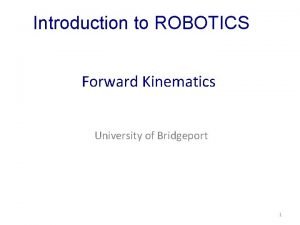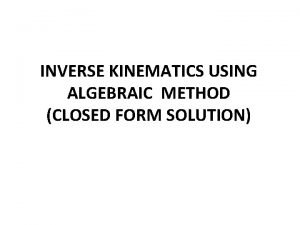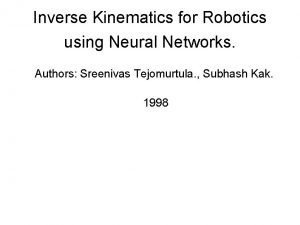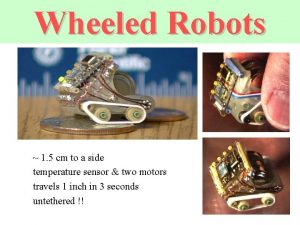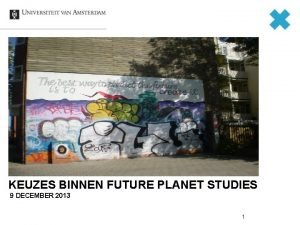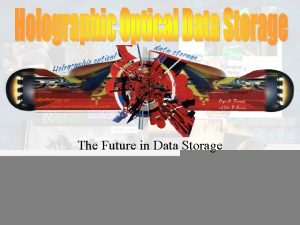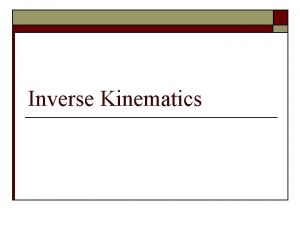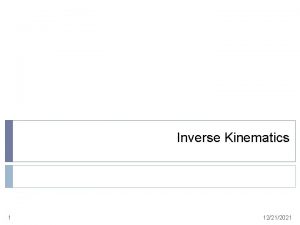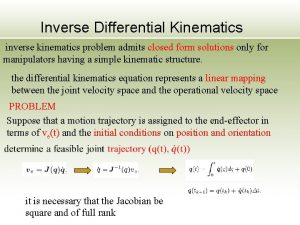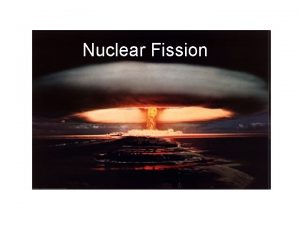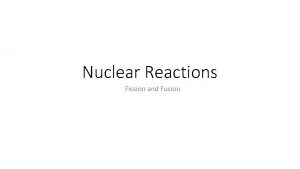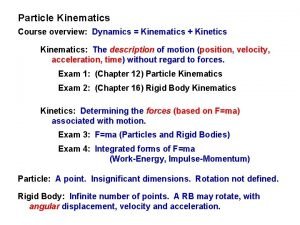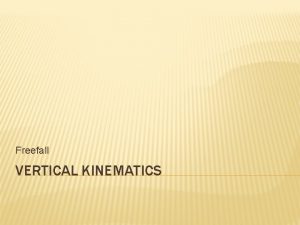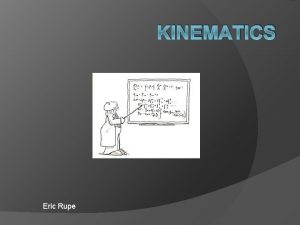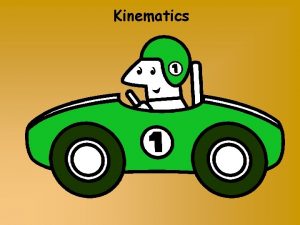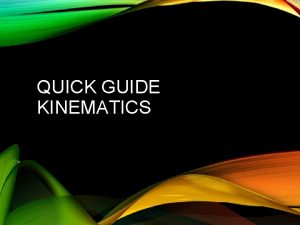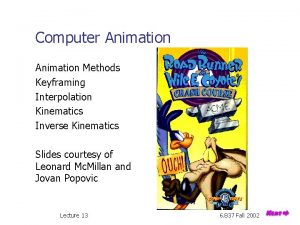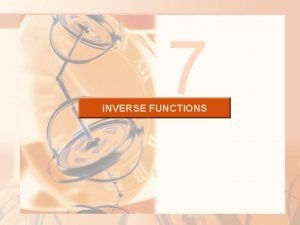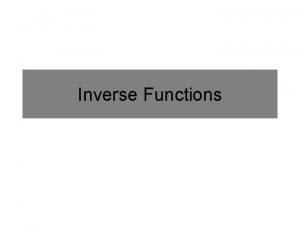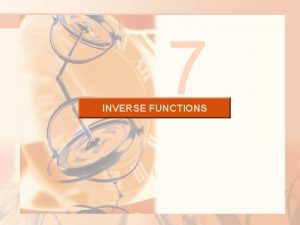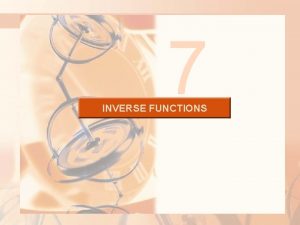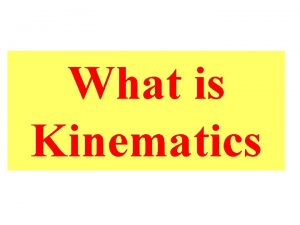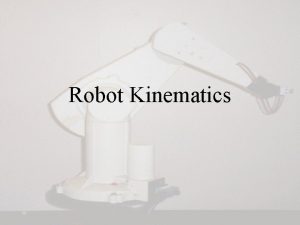Future Fission Studies in Inverse Kinematics at Storage




















- Slides: 20

Future Fission Studies in Inverse Kinematics at Storage Rings A. Henriques 1, B. Jurado 1, D. Denis-Petit 1, 2, M. Grieser 3, J. C. Thomas 4, T. Chiron 1, L. Gaudefroy 2, J. Glorius 5, C. Langer 6, Y. A. Litvinov 5, L. Mathieu 1, V. Méot 2, R. Pérez-Sànchez 1, J. Pibernat 1, R. Reifarth 6, O. Roig 2, U. Spillmann 5, B. A. Thomas 1, I. Tsekhanovich 1 1 CENBG, Bordeaux, France 2 CEA/DAM-DIF, Arpajon, France 3 MPIK, Heidelberg, Germany 4 GANIL, Caen, France 5 GSI, Darmstadt, Germany 6 Frankfurt University, Frankfurt, Germany ISOLDE Solenoidal Spectrometer Workshop Liverpool, 27 -28 th August 2019

Outline • Motivation • Surrogate-reaction Method • Validity • Experiments in Direct Kinematics • Experimental setup • Technical limitations • Moving to Inverse Kinematics at Storage Rings • Proposed experimental setup • Simulations • Solar Cells as Heavy Ion Detectors • Advantages • Compability with SR environment • Response to heavy ions (E>1 Me. V/u)

Motivation The study of neutron-induced fission and capture cross sections of short-lived nuclei is very important to many domains • Nuclear astrophysics understanding the origin of the elements • Reactor physics development of more efficient reactors • Medical applications Often cross sections are very difficult or even impossible to measure due to the high radioactivity of the targets involved!

Surrogate Reaction Method J. Cramer and H. Britt, Nucl. Sci. Eng. 41 (1970) Production of the ion of interest through an alternative reaction to overcome the difficulties to produce and manipulate radioactive isotopes

Surrogate Reaction Method - Validity Neutron-induced and surrogate reaction must lead to the formation of a compound The decay only depends on E*, J and π! In addition, At a limit: - The populated J and π distributions are equal - The decay is independent of J and π (Weisskopf-Ewing limit valid at high E*) Validity determined a posteriori Data obtained with the surrogate method need to be compared to neutroninduced data

Surrogate Reaction Method - Experiment Simultaneous measurement of fission and γ-decay probabilities 3 He + 238 U → 4 He + 237 U* ⇔ n + 236 U 3 He Beam 238 U Target

Surrogate Reaction Method - Results Comparison to neutron-induced calculations He + 3 238 U → 4 He + 237 U* ⇔ n + 236 U Fission Pre P. Marini et al. , to be published Gamma emission lim ina ry Pre lim ina r y Pre lim 4 He+ 240 Pu→ 4 He’+ 240 Pu*⇔ n + 239 Pu Ph. D thesis of R. Perez-Sanchez Even-even nucleus, low density of states near the fission barrier Significant discrepancies for gamma and fission probabilities ina r y

Surrogate Reaction Method Surrogate Reactions can be use to tune parameters in theoretical models Step 1: Calculate spin-parity distributions Step 2: Match the experimental surrogate decay probability by tuning the parameters of the statistical model Step 3: Predict the desired neutron cross-sections

Technical limitations of Direct Kinematics - Unavailability of targets from short-lived nuclei - High background from target contaminants - Pγ: low detection efficiency; discrimination of gammas from fission fragments - Pn: measurement of low-energy neutrons and neutron efficiency Inverse kinematics Access to very short-lived nuclei Detection of heavy residues (A+1)* Storage Rings Energy resolution – 100 ke. V No target contaminants

Surrogate Reactions at Heavy-ion Storage Rings r to c te ons e D ati st Gas jet target -Pure, ultrathin gas target without contaninants -Excelent beam energy resolution due to e- cooling -Excelent spacial resolution εbeam up to 0. 05 mm·mrad Beam 10 A Me. V Injection Electron cooler Extreme High Vacuum XHV-10 -11 ->10 -12 mbar CRYRING @ GSI

Surrogate Reactions at Heavy-ion Storage Rings Fissionfragment detectors Target-like detectors Dipole 20° Gas-jet Target D 2 1013/cm 2 Dipole Unreacted beam Detectors for beam-like nuclei Beam: 107 -108 ions stored 238 U 92+ Beam 10 A Me. V Inj ect ion Simultaneous measurement of gamma, neutron-emission and fission probabilities!!

Surrogate Reactions at Storage Rings Very realistic simulations at 11 A Me. V E*= 8. 2 Me. V, θ=40°± 3° Manfred Grieser – MPIK, Germany 238 U(d, d’) Dipole Fissionfragment detectors Target-like detectors Beam 20° Dipole Gas-jet Target D 2 1013/cm 2 Unreacted beam E* resolution of 200 -400 ke. V Detectors for beam-like nuclei The reconstructed E* resolution is most limited by the detector resolution. Fission fragments emitted in a 20° cone

Surrogate Reactions at Storage Rings Dipole Fissionfragment detectors Target-like detectors Beam 20° Dipole Unreacted beam Detectors for beam-like nuclei Gas-jet Target D 2 1013/cm 2

Surrogate Reactions at Storage Rings Very realistic simulations Dipole Manfred Grieser – MPIK, Germany Fissionfragment detectors 238 U(d, d’) Target-like detectors Beam 20° Dipole Unreacted beam Detectors for beam-like nuclei at 11 A Me. V E*= 8. 2 Me. V, θ=40°± 3° Gas-jet Target D 2 1013/cm 2 Transmission of heavy residues

Surrogate Reactions at Storage Rings Solar Cells -> Heavy ion detectors @ Storage Rings - Low cost - Very robust - Flexible geometry - Operates without bias voltage - High radiation damage resistance - High capacitance ≈ 38 n. F/cm 2 - Specific pre-amplifiers - Study XHV compability -Outgasing rate < 5. 10 -11 mbar. l/(s. cm 2 ) - Irratiation of cells -Heavy ions above 1 A Me. V

Surrogate Reactions at Storage Rings Solar Cells -> Heavy ion detectors @ Storage Rings Experiment @ GANIL, France 84 Kr, 129 Xe, 238 U beams @ 2 to 15 A Me. V 5 x 5 mm 2 cell at 129 Xe at 10 Me. V/u Energy resolution: 2 -3 % Time resolution: 4 ns Suitable for SR experiments

Conclusions and Outlook • Surrogate method as a promising method to infer neutron-induced cross sections • An experimental setup was developed at CENBG to measure simultaneously the gamma emission and fission probabilities • Studies in direct kinematics have opened many questions regarding its direct comparison to neutron induced reactions • Surrogate reactions can be very useful to tune model parameters • Moving to inverse kinematics at storage rings will enable to measure simultaneously the gamma, neutron-emission and fission probabilities with high quality data • We are developing a setup to be used at the CRYRING@GSI • Some preliminary studies of the 238 U(d, d’) reaction have indicated efficiencies close to 100%, E* resolution of 300 ke. V • Solar cells are foreseen to work as heavy ion detectors and we have conducted a series of sucessful exploratory tests to evaluate their compability with the future measurements and the storage ring environment.

Acknowlegdements Manfred Grieser, MPKI, Heidelberg, Germany Jerome Pibernat, CENBG, Bordeaux, France Thierry Chiron, CENBG, Bordeaux, France Bertrand Thomas, CENBG, Bordeaux, France Quentin Laine, Université de Nantes, France This project has received funding from the European Union’s Horizon 2020 research and innovation programme under the Marie Sklodowska-Curie grant agreement No 834308

Thank you!

GSI/FAIR Facility
 Aplusphysics kinematics-horizontal kinematics
Aplusphysics kinematics-horizontal kinematics Spherical wrist robot
Spherical wrist robot Inverse kinematics
Inverse kinematics Inverse kinematics
Inverse kinematics Tricycle kinematics
Tricycle kinematics Future simple future continuous future perfect
Future simple future continuous future perfect Future perfect simple and continuous
Future perfect simple and continuous Paradigm shift from women studies to gender studies
Paradigm shift from women studies to gender studies Unified storage vs traditional storage
Unified storage vs traditional storage Transferring of data from auxiliary storage to main storage
Transferring of data from auxiliary storage to main storage Primary storage and secondary storage
Primary storage and secondary storage Secondary storage provides temporary or volatile storage
Secondary storage provides temporary or volatile storage Future planet studies
Future planet studies Future of storage
Future of storage Storage holds for future use
Storage holds for future use 1 2 3 kondicional u engleskom jeziku
1 2 3 kondicional u engleskom jeziku Future continuous and future perfect
Future continuous and future perfect Tense chart
Tense chart Future nurse future midwife e learning
Future nurse future midwife e learning Future plans and finished future actions
Future plans and finished future actions Present perfect future tense
Present perfect future tense

